
Guide
Enter the smart home: part 5 – Devolo
by Raphael Knecht

Smart home products can automate your everyday life. And to help you navigate this jungle of providers, allow me to introduce you to the most common systems. All-rounder Devolo is followed by Aqara, a subsidiary of Xiaomi.
These days, monitoring your belongings to protect them isn’t just paranoia, but part of any well-equipped smart home. Sensors for water or smoke warn you of impending danger so that you can react in time. Network cameras, sirens and vibration sensors provide additional security within your home. Temperature, humidity and air pressure sensors also ensure that you always have the climate in your home under control and can react if values are too low or too high. The optimal solution: ensure all products you use come from the same manufacturer to avoid compatibility problems. Aqara’s range includes products for all these areas. When it comes to smart homes, this brand is never really brought up. After Homematic IP, Philips Hue, tado°, Netatmo and Devolo, part 6 in my smart home introduction series will show you why I want to change that narrative, and why Aqara deserves attention.
Aqara is a subsidiary of Xiaomi, offering a small but refined selection of smart home products in its portfolio. The whole thing runs via hubs that plug into a wall socket. They don’t need a router connection, instead connecting to your network via Wi-Fi. If you have hazard detectors installed, the siren built into the hub will sound an alarm and the light ring will flash if anything untoward happens. The sensors and switches all operate on button batteries, which should last at least two years, according to the manufacturer. All products are relatively compact and kept in an inconspicuous white. Aqara’s network camera is the only product besides the hub that is also powered. It records HD footage, which it stores on a built-in memory card and uploads to the cloud, connecting to your network via Wi-Fi. Additionally, it can also act as a hub itself. There’s also a motion detector, with night vision and two-way audio. Its standalone sensors don’t require any cabling and are hardly noticeable thanks to their compact shape and plain colour. By the way, they’re UV resistant. Therefore, a sensor doesn’t discolour, even after several years of use near a window.
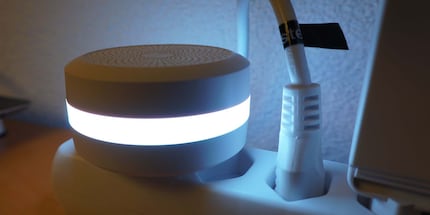
You can equip your doors and windows with vibration detectors from Aqara. You stick them to the frame, and they’ll set off an alarm as soon as they are tampered with. From the outside as well as inside your home, the sensors are almost invisible. You can also use them to protect pictures, vases and other precious decorative objects. In addition to vibrations, the sensor also registers when an object tilts, falls or drops. You can adjust sensitivity in the app. The water sensor is IP67 water and dust-proof. It’ll be able to warn you of flooding potential nearly anywhere you put it. It registers water levels to within 0.5 millimetres, sending a message to the hub and your smartphone as soon as a predefined value is exceeded. The temperature, humidity and air pressure sensor also notifies the hub and your phone as soon as specified values are exceeded or not reached. Additionally, it always sends current data to your smartphone. This way you’ll always know exactly how your home climate is doing. You can also find a motion sensor and various wireless switches in the Aqara range. You can use them to control all kinds of Zigbee-compatible devices – from roller shutters to lights and heating.
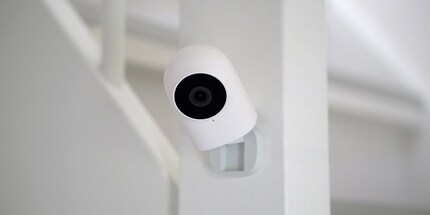
In order for you to operate your smart lights, shutter controls and heaters with Aqara, they must support the Zigbee protocol. Aqara products are based on this radio standard, which is also how they communicate with each other. All you need to get started with Aqara is the hub. Any and all commands from separately available sensors, meters and switches converge there. Theoretically, you could also control the system or its accessories via any other base that is Zigbee-compatible. However, I believe and have experienced that products from the same manufacturer cause the least problems. Which is why I strongly recommend pairing up the motion sensor from Aqara with the Aqara Hub as well. The exception: you already have a smart home based on the Zigbee standard and want to expand it with one or more Aqara products, such as the surveillance camera. This offers the same functions as the hub – apart from the siren and the illuminated ring – and can therefore also be used as a control centre.
You can add up to 32 accessories to the Aqara base or camera. Even if your internet goes down, all stored commands, scenes and automation will still work properly. As long as the hub is connected to the mains and the sensors, buttons and detectors have enough battery power, your Aqara system will continue to run even without Wi-Fi. You can also expand your Aqara smart home with accessories that use this standard, or add it to an existing HomeKit system, thanks to Apple’s HomeKit support. The Aqara Home app – available for iOS and Android – allows you to control your smart home products from anywhere in the world. Forget any complicated installation or Aqara Hub cables, all you need is an outlet. Giving you an easy base set up as well as accessories via plug-and-play. Moreover, Aqara products don’t require a slot at the router.
If you only use products from the same manufacturer, compatibility is guaranteed. Since Aqara covers a wide range of accessories with its affordable product range, expanding your smart home to more rooms and adding additional functions is also no problem. Thanks to the Zigbee protocol, you can also expand your smart home relatively easily with devices from other manufacturers that work with the same standard. And as Aqara consistently relies on a small, white and inconspicuous design, you can cleverly and inconspicuously camouflage the sensors. On the one hand, they don’t attract the attention of potential burglars, and on the other, they don’t negatively affect your interior.
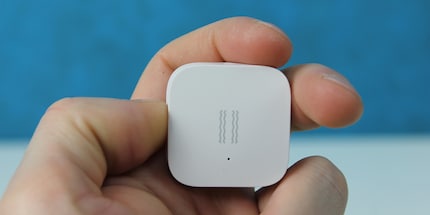
Plug in, put on and add accessories: that’s about how long you’ll need to kit out your smart home with Aqara. Since you don’t have to do any electrical work or lay cables, setting up and placing the devices is also quick. Compared to most other smart home systems, Aqara products are much more affordable. In addition, the devices – probably thanks to parent company Xiaomi – are of high quality and work flawlessly even after long continuous use. One user also praised the quick response time of the motion sensor. Two other users, on the other hand, criticised the reaction time and the sensitivity of the vibration sensor. Yet again, the temperature, humidity and air pressure sensor and its smooth usage are highly lauded. Aside from low prices, reliable protection features are also positively reviewed.
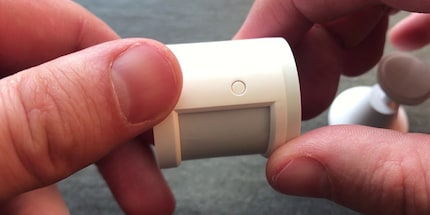
Although Aqara offers more than just a hub, a switch and a sensor, the selection could be a bit bigger. For example, I’m missing roller shutter actuators, thermostats or a weather station for outdoors. I can switch to alternatives that also work with Zigbee. Nevertheless, from experience, I have the least difficulty when all products are from the same manufacturer. The limited usability of the products as well as the software is also partially criticised by Aqara users. Otherwise, the Xiaomi subsidiary’s smart home system is well received in our community, as these reactions to my last article also show.
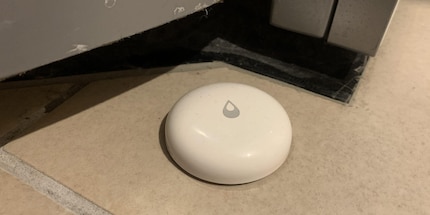
For home monitoring via cameras, Netatmo offers a solid alternative product in its Presence. Since the same manufacturer also offers hazard detectors for smoke as well as doors and windows, you can also choose them if needed. Devolo also offers a motion detector, a humidity sensor and a water level detector. No matter which manufacturer or device you choose, neither is a step down in quality if Aqara’s system doesn’t appeal to you. They’re priced similarly and offer the same features to protect your belongings at home. There’s also a water sensor from Homematic IP that warns you in case of floods and informs you via your smartphone and a siren. However, since Homematic IP products require a bit more IT and electrical knowledge, I wouldn’t recommend them to you if you’re flirting with a simple plug-and-play solution such as Aqara.
If you’re looking for an alternative for the Aqara temperature, humidity, and barometric pressure gauges, my advice is to go straight to a thermostat. Not only does it provide current data, it can also control your heating at the same time. This way you save electricity and therefore money in the long run. Here, products from tado°, Netatmo, Devolo or Homematic IP are potential fallback options. For numerous switches that Aqara has on offer, let’s say, you can find devices with similar functionality at Homematic IP. These are also mountable without major electrical installations and quickly set up. Dingz also offers an interesting alternative with the smart wall switch. Although an existing switch has to give way for the installation, you get a logically structured app, countless expansion options and compatibility with many other systems. As a replacement for Aqara’s vibration sensor, I can recommend window and door contacts from Homematic IP. While they’re slightly larger and flashier than their Aqara counterparts, they offer the same protection and can be embedded into the almost infinitely expandable smart home universe of Homematic IP.
Thanks to the range this Xiaomi subsidiary offers, Aqara gives you the opportunity to make your home smarter in many ways: from the temperature sensor to various switches and vibration detectors to the surveillance camera, it includes all you’ll need to get started with your smart home as simply and quickly as possible. Additional non-proprietary accessories will work with your system, and you can add them to the existing smart home, provided that the Zigbee protocol is supported. There are almost no limits to the scope and functionality of your smart home. The Aqara app is also logically designed, works smoothly and makes the already quite simple commissioning of individual devices even easier. If you’re an electronics pro and like to tinker with your multi-brand set-up, I recommend a more advanced system – Homematic IP, for example. If, on the other hand, you are looking for inexpensive, inconspicuous entry-level products, Aqara is your best choice.
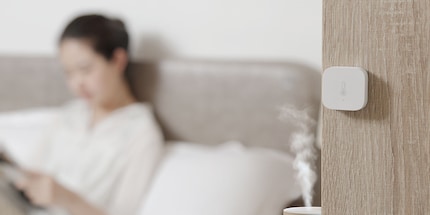
Homematic IP offers an easy entry into the smart home universe. Philips Hue is even easier to work with, with a focus on lighting. tado° plays to its strengths in the area of smart heating. Products from Netatmo monitor everything in and around your home. Devolo offers you not only an extensive smart home range but also powerful network products. Finally, with Aqara, you can rely on a rather smaller player that still matches the very best in smart home tech, shining with a beginner-friendly set-up, flawless functioning, and unobtrusive design.
| Price | Product range | Expandable | Beginner-friendly | Usability | Climate control | Shutters | Home security | Lighting | Hazard alarm | |
|---|---|---|---|---|---|---|---|---|---|---|
| Homematic IP | ++ | ++++ | ++++ | ++ | ++ | ++ | +++ | + | - | ++ |
| Philips Hue | + | ++ | ++ | +++ | ++++ | - | - | - | ++++ | - |
| tado° | + | + | ++ | ++ | ++ | ++ | - | - | - | - |
| Netatmo | ++ | ++ | ++ | +++ | +++ | ++++ | - | ++++ | + | +++ |
| Devolo | +++ | +++ | ++++ | +++ | ++ | + | ++ | ++ | - | ++ |
| Aqara | ++++ | ++ | +++ | ++++ | ++ | + | - | +++ | - | ++++ |
In the next part, I’ll show you what Eve Systems has to offer. If you want to join me on my mission and don’t want to miss any smart home articles, follow me by clicking on the «Follow author» button on my profile.
Image sources for the teaser: netzpiloten.de and kaspa.rs
When I'm not stuffing my face with sweets, you'll catch me running around in the gym hall. I’m a passionate floorball player and coach. On rainy days, I tinker with my homebuilt PCs, robots or other gadgets. Music is always my trusted companion. I also enjoy tackling hilly terrain on my road bike and criss-crossing the country on my cross-country skis.
Practical solutions for everyday problems with technology, household hacks and much more.
Show all